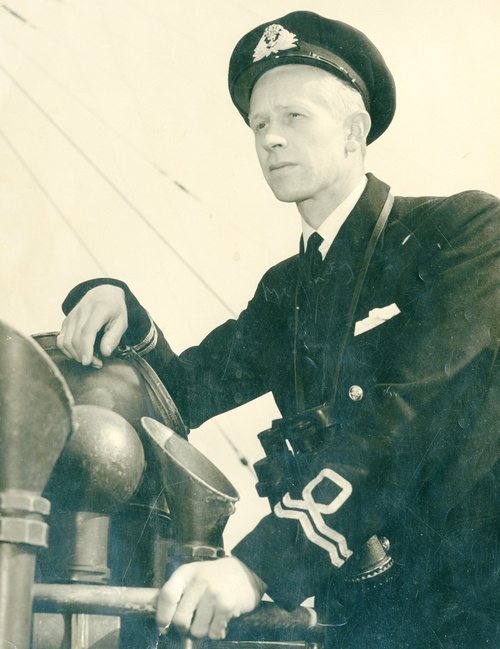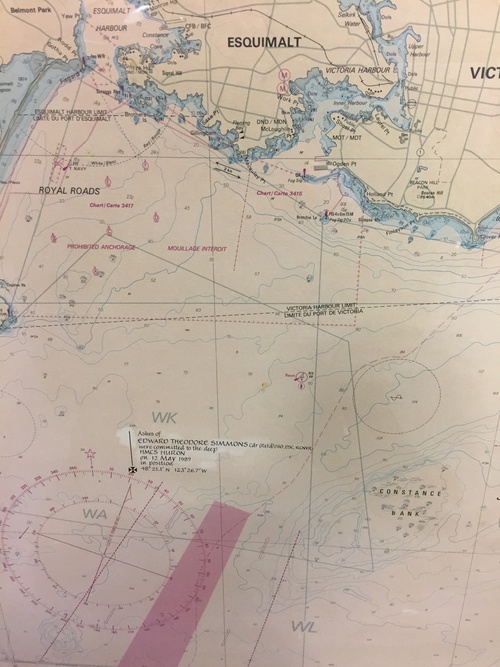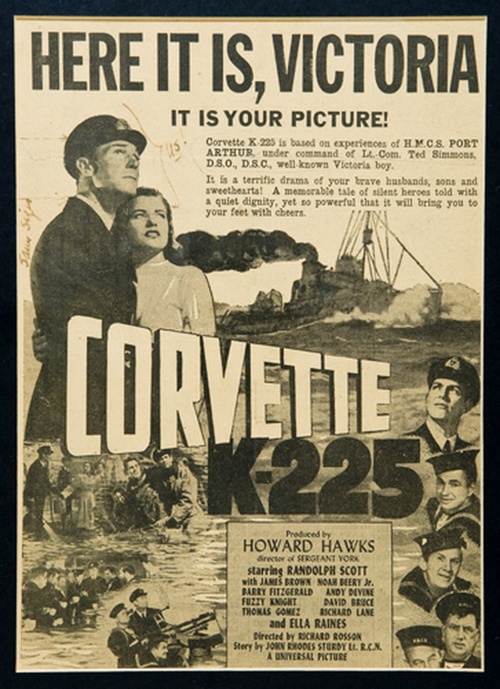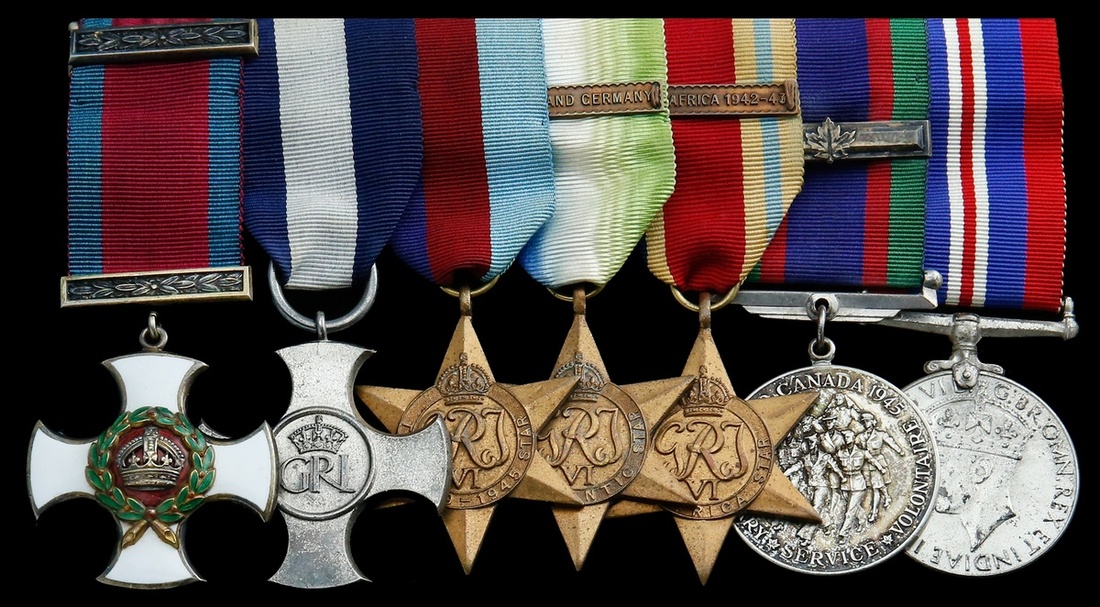Auction: 17003 - Orders, Decorations and Medals
Lot: 679
INTRODUCTION
In the annals of the Second World War at sea may be found many examples of heart-rending self-sacrifice and valour that command deep admiration and respect: quite exceptional - and inspiring - examples of heroism enacted in the face of great danger.
Within that context must surely be the handful of officers and ratings who were afforded the dubious - and highly perilous - honour of boarding stricken U-Boats in pursuit of 'Enigma'. The extraordinary courage of one such party - led by Lieutenant David Balme of H.M.S. Bulldog - secured not just an Enigma machine but a vital codebook from the U-110 in April 1941. In the aftermath of that heroic effort, the salvaged hardware and codes played a significant role in cryptanalysis led by Alan Turing at Bletchley Park: the captured Enigma machine was used to intercept countless U-Boat 'Wolfpacks' and undoubtedly contributed to our ultimate victory in the battle of the Atlantic.
A few months later - on the night of 10-11 September 1941 - whilst steaming to the assistance of a convoy of 64 merchantmen off Greenland - H.M.C.S. Chambly and H.M.C.S. Moose Jaw engaged and brought to the surface U-501. Here, then, arose another 'Enigma opportunity', an opportunity gallantly taken up by Lieutenant E. T. 'Ted' Simmons, R.C.N.V.R., and a boarding party from the Chambly. One of his party was drowned but Simmons, having confronted a brace or so of belligerent U-Boat men with his revolver, managed to enter the conning tower and make his way to the control room, flashlight in hand: the damaged U-Boat began to sink fast, so Simmons had to run for it and barely escaped through the hatch as the U-Boat made its last plunge.
The Canadians celebrated their first U-Boat 'kill' and Simmons's survival: he was awarded the D.S.C.
An indication of just how lucky he was to escape a terrible end in the confines of the stricken U-501 is to be found in another episode in the battle to secure the latest Enigma hardware and codes. On 30 October 1942, in an action in the Mediterranean, U-559 was brought to the surface and engaged by H.M.S. Petard and her consorts. Once again, an opportunity arose to mount a boarding party, on this occasion under the leadership of Lieutenant Anthony Fasson. He and his comrades managed to secure some valuable code books but the gallant Lieutenant - and one of his party - Able Seaman Colin Grazier - were unable to get clear when the U-559 took her final plunge: both were awarded posthumous George Crosses.
Simmons's hair-raising exploits aboard - and escape from - the stricken U-501 did little to dampen his appetite for action. The contrary. On 19 January 1943, whilst in command of H.M.C.S. Port Arthur, he accounted for the Italian submarine Tritone after delivering 'a perfect 10 pattern depth charge attack' off Bougie, Algeria. He was awarded an immediate D.S.O.
No less memorable than Simmons's resultant - unique - combination of gallantry awards to the R.C.N.V.R. is the fact his gallant exploits served as the catalyst for the making of the wartime motion picture "Corvette K-225", featuring Hollywood star Randolph Scott (1943):
https://www.youtube.com/watch?v=4tqSSTGXoUU
With well over 300,000 views and 753 'likes', it is pleasing to reflect that the gallant exploits of Simmons and his shipmates live on.
Less pleasing is Hollywood's more recent effort in respect of portraying the story of the capture of the first Enigma machine, namely the release of the motion picture U-571 in June 2000. Rather than correctly credit the Royal Navy - and H.M.S. Bulldog - with that distinction, the plot chose to credit 'disguised submariners' of United States Navy. Simmons, who was living in retirement in England at the time, felt compelled to voice his displeasure: such became the scale of the British public's displeasure that the matter reached the Houses of Parliament, where in fact Prime Minister Tony Blair described the film as an 'affront' to British sailors.
To that sentiment - and by way of general observation - should be added the equal affront caused the officers and ratings of the Royal Canadian Navy, not least Commander E. T. Simmons, D.S.O., D.S.C., who ended the conflict in command of the successful - all-Canadian striking force - Escort Group 26.
He may have retired to England but his heart remained in Canada. Following his death in 1989, his ashes were committed to the deep from the decks of H.M.C.S. Huron: a framed nautical chart of the location of that solemn event - off Esquimalt, B.C. - is included.
'Once the party was on the U-boat's heaving deck, Simmons yelled "Hands up!", seized a German crewman who spoke English and ordered him below. When his captive refused, protesting that "No good, boat alles kaput!" Simmons brandished his .45 calibre pistol and propelled two other Germans towards the conning tower. They too refused to go below; the U-boat was now sinking stern first and time was running out. Simmons jumped onto the ladder and went down the hatch with a flashlight … '
'Local Heroes' - an article on the wartime career of Lieutenant-Commander E. T. 'Ted' Simmons, D.S.O., D.S.C. - by Rick James, Esquimalt Naval & Military Museum website, refers.
The remarkable Second World War anti-U-boat operations immediate D.S.O., 'boarding party' D.S.C. group of seven awarded to Commander E. T. 'Ted' Simmons, Royal Canadian Naval Volunteer Reserve: just nine D.S.O.s were awarded to the Royal Canadian Navy in the last war, Simmons's example being unique to the R.C.N.V.R.
Distinguished Service Order, G.VI.R., 1st type, silver-gilt and enamel, the reverse of the suspension bar officially dated '1943'; Distinguished Service Cross, G.VI.R., hallmarks for London 1942, the reverse officially dated '1942'; 1939-45 Star; Atlantic Star, clasp, France and Germany; Canadian Voluntary Service Medal 1939-45, with overseas clasp; Defence Medal 1939-45; War Medal 1939-45, mounted as worn, upper brooch-bar of D.S.O. removed for mounting purposes, generally very fine or better (6)
D.S.O. London Gazette 4 May 1943:
'For skill and judgment in action against enemy submarines.'
D.S.C. London Gazette 3 March 1942:
'For bravery and enterprise in action against enemy submarines.'
Edward Theodore Simmons was born in Vernon, B.C. in 1910 but later moved to Victoria, where he was educated locally and became an interior decorator. Enlisting in the Royal Canadian Naval Volunteer Reserve (R.C.N.V.R.) on the outbreak of hostilities in September 1939, he was commissioned and attended the training establishment H.M.C.S. Stone Frigate, at Kingston, Ontario.
In December 1940, he joined the recently commissioned Flower-class corvette H.M.C.S. Chambly, in which capacity he was quickly employed on the Atlantic-run, operating in an escort force out of Newfoundland.
Life aboard a Flower-class corvette was tough by any standards. The Canadian War Museum website states:
'Service in 'Flowers' in the North Atlantic was typically cold, wet, and uncomfortable. Every plunge into an oncoming wave was followed by a cascade of water into the well deck amidships. Men at action stations were drenched with spray, and water entered living spaces through hatches. The interior was constantly wet … The head (toilet) was drained by a straight pipe to the ocean; and a reverse flow of the icy North Atlantic would cleanse the backside of those using it during rough weather … Men slept on lockers or table-tops or in any dark place that offered a little warmth … They [the Flowers] had a reputation of having poor sea-handling characteristics; rolling in heavy seas with complete 80-degree rolls (40 degrees each side of the normal upright position) being fairly common … '
First Canadian U-Boat 'kill'
It was amidst such conditions that H.M.C.S. Moose Jaw and H.M.C.S. Chambly rushed to the assistance of convoy SC-42 in September 1941, a convoy of 64 merchantmen which had fallen prey to a determined 'Wolfpack' attack off Greenland - some 18 merchant ships were sunk in the running battle that ensued:
'The attacks subsided during the day of 10 September, but, as dusk fell, the German submarines renewed their assault on Convoy SC-42. Captain 'Chummy' Prentice of the R.C.N. corvette H.M.C.S. Chambly anticipated that the enemy would attack the convoy from the south. Together with the corvette H.M.C.S. Moose Jaw, the Chambly moved to intercept the German submarines. Almost immediately, Prentice's ASDIC team reported the location and depth of a U-Boat. Prentice ordered the crew of the Chambly to execute a fast attack with five depth charges. Within minutes, the heavily damaged German submarine U-501 struggled to the surface. The captain of the Moose Jaw, 'Freddie' Grubb, ordered his crew to ram the damaged vessel, but the small corvette merely glanced off the submarine's hull. As the Moose Jaw pulled back, the Chambly drew alongside the stricken submarine, and Lieutenant Ted Simmons led a boarding party onto U-501. Simmons's goal was to seize the German code books and code machines … '
'Local Heroes' - an article on the wartime career of Simmons - by Rick James, published by the Esquimalt Naval & Military Museum, continues:
'Once the party was on the U-Boat's heaving deck, Simmons yelled "Hands up!", seized a German crewman who spoke English and ordered him below. When his captive refused, protesting that "No good, boat alles kaput!" Simmons brandished his .45 calibre pistol and propelled two other Germans towards the conning tower. They too refused to go below; the U-Boat was now sinking stern first and time was running out. Simmons jumped onto the ladder and went down the hatch with a flashlight. Descending, he discovered that the captured U-Boat was flooding fast. Simmons abandoned hope of retrieving code books and scrambled back up the conning tower. He quickly ordered everyone over the side, boarding party and prisoners alike. When the group mustered aboard Chambly, it was discovered that a stoker, William Irvin Brown, was missing, possibly sucked under by the U-Boat as it descended to the sea bottom … '
Simmons was awarded the D.S.C. and the Royal Canadian Navy celebrated its first U-Boat 'kill'. According to Moose Jaw's captain's official report, the U-Boat's survivors comprised an interesting bunch:
'The three German officers rescued (the Commanding Officer, Executive Officer, and Second Lieutenant) were placed in my cabin under guard. The remainder of the prisoners were placed in the after cabin flat. I learned several days later that there were two midshipmen amongst the ratings, but decided to leave them there at the request of the German captain, as I considered that it was then too late to prevent them instructing the captured ship's company on their behaviour should they wish to do so.
All prisoners were well behaved and gave no trouble. There was genuine affection between officers and men. I found them as most unwilling to talk on Service subjects and, as I was unable to see them for two days after their capture, I decided not to question them. This decision was endorsed by the Intelligence Officer from the Admiralty, who later interviewed me. The officers appeared secretly glad that they would no longer be actively engaged in hostilities. They were most interested in corvette construction and performance generally, and asked a good many questions on the subject. On the occasions when I reduced the speed of the convoy they appeared to be most uneasy and commented on the danger of so slow a speed. They considered our food inferior to theirs. This is hardly to be wondered at, as the only food remaining in the ship consisted of tinned beef, vegetables, potatoes, and ship's biscuit. They informed me that the German Navy issues tinned bread of excellent quality which keeps indefinitely. They also stated that all ships carry various vitamin tablets, which have been found of great use. These tablets are made from secret formulas held by one firm in Germany. They were convinced that Germany had ample oil and food reserves for continuation of the war, but did not appear certain of the war's final outcome.
The total number of prisoners taken from the U-501 was three commissioned officers, two midshipmen, and twenty-four ratings.
The Commanding officer, Commander Hugo Forster, is a man of thirty-five, and was born in Berlin. He was quiet, well-mannered man, and I saw no signs of the Nazi influence [He committed suicide rather than accept repatriation at the war's end].
The Executive Officer, Lieutenant Werner Albring, age twenty-six, was born in Wessel. I believe that if it had not been for the example set him by his Commanding Officer he would have given trouble, as he appeared to be a Nazi type.
The Second Lieutenant, Lieutenant Has Sittenfeld, age twenty-four, born in Kiel, was in manners and attitude, like his Commanding Officer.
All three officers spoke both English and French but none of the ratings appeared able to speak any language but German.'
'Kill' number 2
In the new year of 1943, following a Navigation course, Simmons took command of H.M.C.S. Port Arthur. It was in this capacity that he was directly responsible for the destruction of the Italian submarine Tritone, when he orchestrated a model attack off Algeria on 19 January. H.M.C.S. Port Arthur takes up the story:
'Port Arthur's attack procedure was faultless. Within five minutes of the first indistinct contact having been made, a full 10 charge pattern of depth charges was raining down upon the target. The resulting explosions temporarily put Port Arthur's asdic out of order. Contact could not be regained but in the meantime, the destroyer H.M.S. Antelope had been racing towards the scene of action and was now in position to continue the hunt.
However, Port Arthur's one attack had been sufficient and as Antelope charged in, the submarine came to the surface dead ahead of her. Antelope opened fire with all guns that would bear but it was obvious that the submarine was sinking and Antelope ceased fire to pick up survivors.
In his subsequent report of the action, the Commanding Officer of Antelope made it quite clear that when the submarine had surfaced, it had been already a "dead duck" … Port Arthur's victim was proved to have been the Italian submarine Tritone. She had left Genoa on her first operational assignment a few days earlier.
Unfortunately for her, it was her first and last patrol. Of her company of seven officers and 45 men, four officers and 22 men were rescued. Listed among the survivors was the Captain.'
Following this success - and like exploits enacted by H.M.C.S. Ville de Quebec - Winston Churchill sent a congratulatory message to the Canadian Prime Minister. Simmons was awarded an immediate D.S.O.
Senior command
In the following year, he returned to his hometown to commission the River-class frigate H.M.C.S. Beacon Hill. Otherwise known as 'Victoria's very own ship', Beacon Hill was soon engaged in patrol and convoy duties in the Irish Sea and English Channel, for Simmons - now an acting Commander - was Senior Officer of Escort Group 26, an 'all-Canadian striking force'. By war's end, Beacon Hill had supported - or distantly supported - a total of 79 convoys under the command of her now famous captain.
On being released from the R.C.N.V.R. in December 1945, Simmons pursued a successful career with the Distillers Corporation of Canada, latterly as President. He retired to England in 1965 and, following his death in 1989, his ashes were committed to the deep from H.M.C.S. Huron.
Sold with a quantity of original documentation, comprising:
(i)
The recipient's D.S.O. warrant, in the name of 'Temporary Lieutenant E. T. Simmons, D.S.C., Royal Canadian Naval Volunteer Reserve', dated 4 May 1943.
(ii)
Admiralty letter informing the recipient of his award of the D.S.O., dated 5 May 1943; related High Commissioner for Canada's congratulatory letter, dated 8 May 1943, and Canadian Department of National Defence (Naval Service) forwarding letter for the warrants of the Order, dated 18 December 1943.
(iii)
The recipient's commission warrant for the rank of Temporary Lieutenant, R.C.N.V.R., in the name of 'Mr. Edward Theodore Simmons', dated 30 August 1941.
(iv)
R.C.N.V.R. Navigation School, certificate for Specialist 'N' Officer, in the name of 'Lieut. E. T. Simmons, D.S.C., R.C.N.V.R.', dated 11 April 1942.
(v)
A folio of signals, H.M.C.S. Beacon Hill, dated 8 May 1945, the cover inscribed, 'A./Commander Edward T. Simmons, D.S.O., D.S.C., R.C.N.V.R.', containing 20 original - and fascinating - 'Naval Message' sheets including those of a 'SECRET' nature.
(vi)
A quantity of wartime photographs, including images of the recipient being presented with his D.S.C. and another, with his mother, after receiving his D.S.O.; addressing ship's company, etc.
(vii)
A framed newspaper advert for the motion picture "Corvette K-225" with strapline, 'Here it is Victoria, it is your picture!' and text the stating 'Corvette K-225 is based on experiences of H.M.C.S. Port Arthur under command of Lt. Com. Ted Simmons, D.S.O., D.S.C., well-known Victoria boy', the image of film stars Randolph Scott and Ellen Raines bracketed together by Simmons in ink, with further annotation in his own hand 'Us!'; together with a framed feature from The Rally, 15 August 1943, showing Simmons and five other officers in caricature form.
(viii)
A wartime scrap book containing a mass of newspaper cuttings in respect of the recipient's widely publicised exploits and commands, together a telegram reporting his safe return home in 1945.
Please see Lot 641 for the recipient's miniature dress medals.
Subject to 20% VAT on Buyer’s Premium. For more information please view Terms and Conditions for Buyers.
Sold for
£18,000











